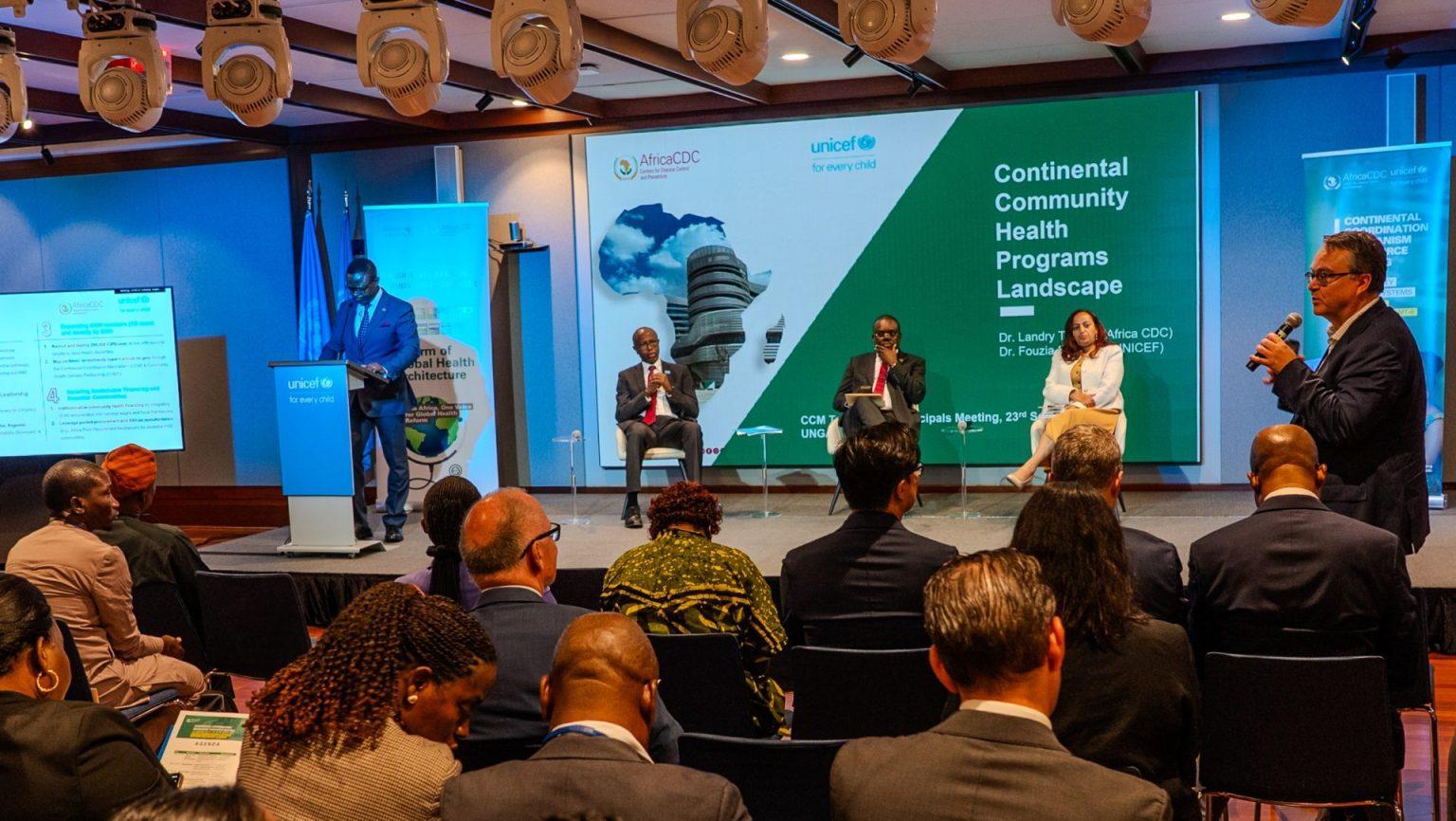Africa-Press – Liberia. Africa now knows its community health workforce better than before. There are approximately seven community health workers per 10,000 people — equivalent to one community health worker for every 1,235 individuals. Around 80% of countries surveyed have a national community health strategy, and 63% — two-thirds — recognise community health workers as an integral part of the national health workforce. Countries have standardised curricula for training community health workers.
Working in unison, teams from the Africa Centres for Disease Control and Prevention (Africa CDC) and UNICEF are painting a clearer picture of the status of community health workers in Africa. At least 69% of Member States have community-based data integrated into their national health information systems, and 63% have a master list identifying where community health workers are deployed. Fifty-one per cent of 26 Member States pay community health workers between USD 10 and USD 300 per month, with a median of USD 50.
This newly gathered data on community health workers tell → (tells) a remarkable story of progress, but there is still work to be done.
Africa CDC convened the Continental Coordination Mechanism (CCM) Taskforce Meeting on Community Health, bringing together Ministers of Health from African Union Member States, principals of institutions supporting community health on the continent, senior government officials, and global health leaders to accelerate the implementation of community health priorities across Africa, on the sidelines of the 80th United Nations General Assembly (UNGA) in New York.
Examining the data at hand, one strong proposal emerged: prioritisation of domestic funding and integration of community health workers’ remuneration into national wage bills, while exploring innovative financing options to ensure programme sustainability.
Effective utilisation of every pound (or dollar) will come from strengthening national community health strategies and coordination mechanisms to promote accountability, harmonise regulations, and operationalise the principles of One Budget, One Implementation Plan, and One Monitoring and Evaluation Framework.
“Community health workers are the backbone of Africa’s health systems. This Taskforce Meeting underscores our commitment to strengthen and expand community health programmes to reach every household and leave no one behind,” said Dr Jean Kaseya, Director-General of the Africa CDC.
UNICEF’s Deputy Executive Director, Dr Omar Abdi, reinforced the need to increase domestic financing whilst enhancing efficiencies in health expenditure as a sustainable solution to strengthening and scaling national community health programmes.
The principals of the meeting emphasised expanding and strategically deploying the CHW workforce, harmonisingtraining and certification frameworks, and investing in continuous capacity building to ensure CHWs can meet evolving public health needs. Leveraging interoperable digital tools and community health information systems to strengthen real-time decision-making, service delivery, and monitoring of CHW programmes will help drive the 2017 African Union decision to train, deploy, and sustain two million community health workers across the continent.
The Continental Coordination Mechanism (CCM) Taskforce provides strategic leadership for Africa’s community health agenda. It sets the continental agenda, mobilises political and financial support, and engages key stakeholders — including principals of institutions supporting community health, funders, and high-level influencers — to strengthen policies, partnerships, and funding for sustainable community health programmes across the continent.
The Taskforce highlighted progress in Africa’s community health systems as indicated by the 2024 Africa CDC–UNICEF Community Health Survey, covering workforce, policy, and financing.
In 2024, there were 1,042,441 CHWs deployed in 48 African countries, with 50.5% being women. This represents a significant milestone toward the continental target of two million CHWs, set by the African Union in 2017.
CHWs deliver a broad range of services — from community-based surveillance and health promotion to basic curative care, nutrition, and mental health. Despite this scale, the average CHW density remains 7.4 per 10,000 population, highlighting the need for continued investment and strategic deployment.
Forty-three Member States (84%) have a national community health strategy, with 35 (78%) costed — up from 47% in 2022. Forty-nine Member States (96%) have designated entities responsible for community health programmes, most supported by government-led coordination platforms to align stakeholders and resources.
Only 51% of community health budgets are funded, primarily from external sources. Just six countries finance over 80% of CHW programmes domestically, while 18 countries rely on donors for 90% or more of their budgets. Africa CDC and UNICEF estimate that an additional USD 3.65 billion (USD 720 million annually over five years) is required to achieve the full deployment of two million CHWs across Africa.
Dr Kaseya said the findings of this survey will inform critical next steps to sustain the Community Health Programme on the continent.
As these findings highlight both progress and the critical bottlenecks that must be addressed collectively at continental and national levels, Africa CDC and UNICEF are finalising the report for a high-level launch and dissemination.
source: africacdc
For More News And Analysis About Liberia Follow Africa-Press






